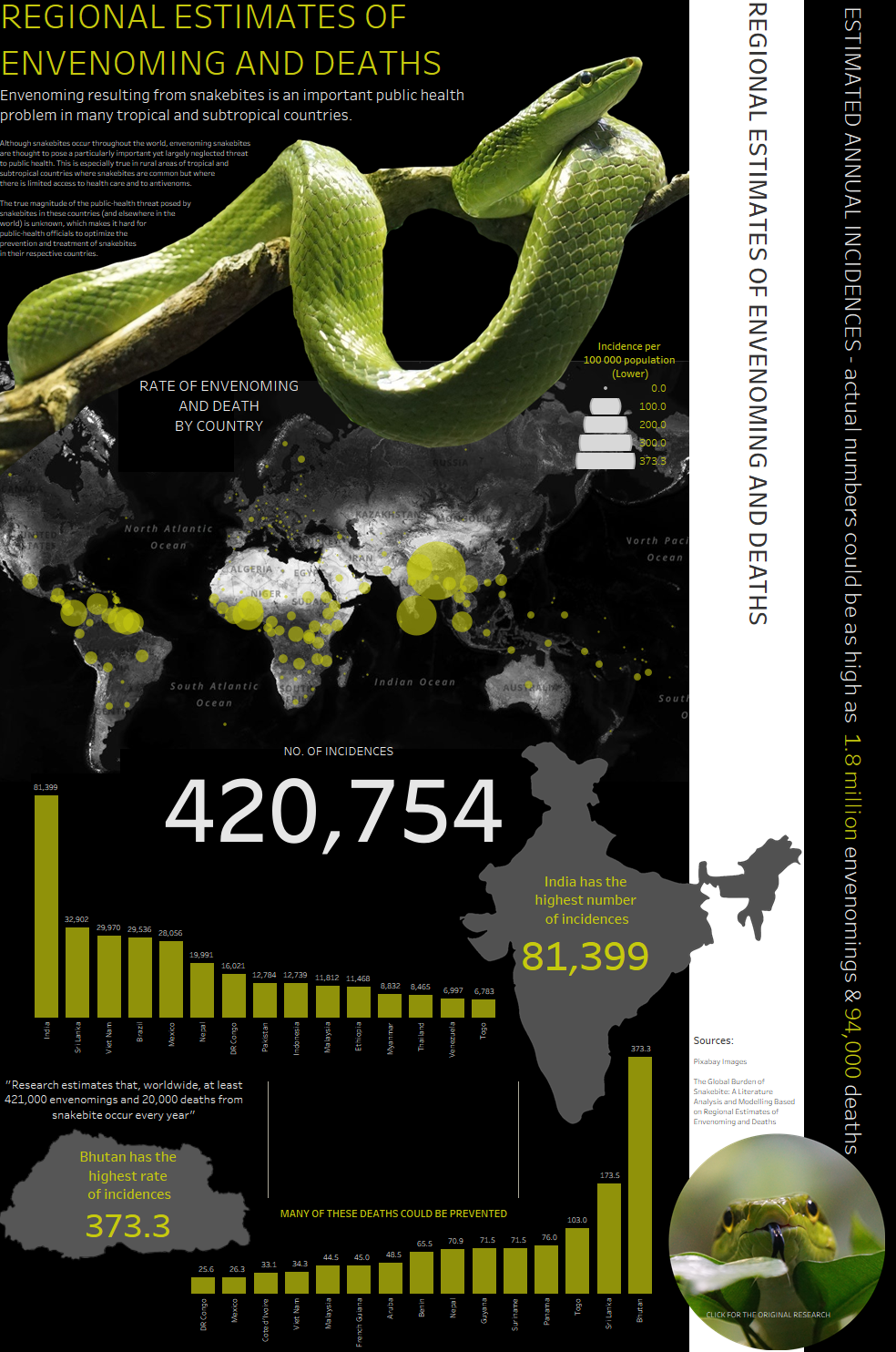Envenoming resulting from snakebites is an important public health problem in many tropical and subtropical countries.
Although snake bites occur throughout the world, envenoming snakebites are thought to pose a particularly important yet largely neglected threat to public health. This is especially true in rural areas of tropical and subtropical countries where snakebites are common but where there is limited access to health care and to antivenoms.
The true magnitude of the public-health threat posed by snakebites in these countries (and elsewhere in the world) is unknown, which makes it hard for public-health officials to optimize the prevention and treatment of snakebites in their respective countries.
- Research estimates that, worldwide, at least 421,000 envenomings and 20,000 deaths from snakebite occur every year (actual numbers could be as high as 1.8 million envenomings and 94,000 deaths).
- India has the highest number of incidences (81,399 envenomings).
- Bhutan has the highest rate of incidences (373,3 envenomings).
Via tableau.com
Related post:
- The World's deadliest animals
Although snake bites occur throughout the world, envenoming snakebites are thought to pose a particularly important yet largely neglected threat to public health. This is especially true in rural areas of tropical and subtropical countries where snakebites are common but where there is limited access to health care and to antivenoms.
The true magnitude of the public-health threat posed by snakebites in these countries (and elsewhere in the world) is unknown, which makes it hard for public-health officials to optimize the prevention and treatment of snakebites in their respective countries.
- Research estimates that, worldwide, at least 421,000 envenomings and 20,000 deaths from snakebite occur every year (actual numbers could be as high as 1.8 million envenomings and 94,000 deaths).
- India has the highest number of incidences (81,399 envenomings).
- Bhutan has the highest rate of incidences (373,3 envenomings).
Via tableau.com
Related post:
- The World's deadliest animals

This post may contain affiliate links. As an Amazon Associate, I earn from qualifying purchases.